All images by the ICZ
the more we get together (ii)
From 1910-60, German entomologist Dr Herbert Weidner studied pest insects and their effects on human life. Considered the father of “urban ecology”, he collected specimens of these insects as well as the objects they damaged. This series of photographs depict his insect collection, now housed in the University of Hamburg and divided into four categories: ‘Insects that destroy food’, ‘Insects that destroy wood’, ‘Insects that destroy our materials’ and ‘Insects that cause harm to people’.
 House Wood Borer
House Wood Borer
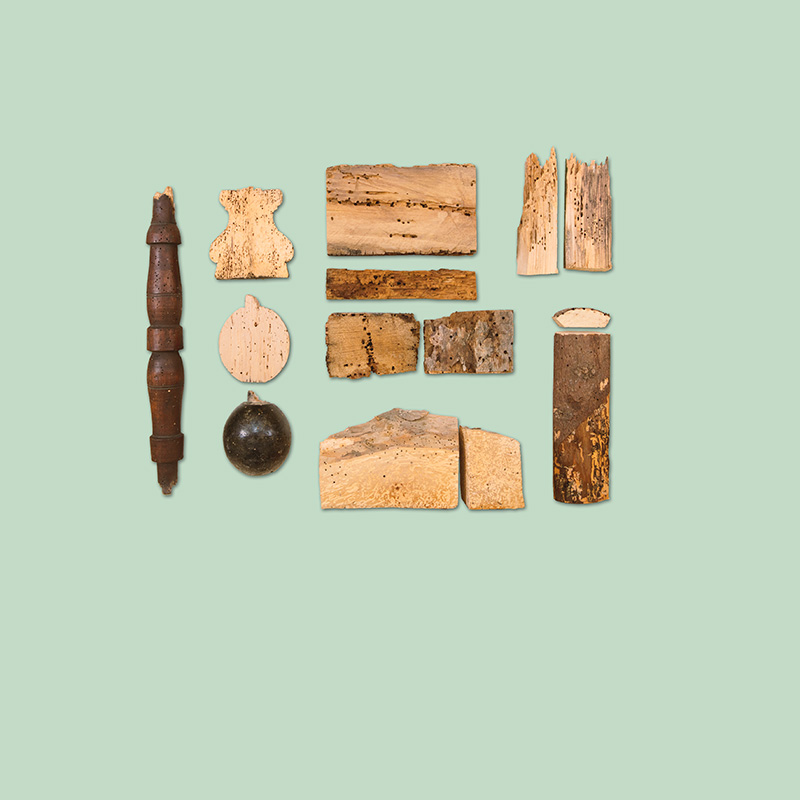 The Destruction of Wood (common furniture beetle, fan-bearing wood-borer, deathwatch beetle, pine knot borer)
The Destruction of Wood (common furniture beetle, fan-bearing wood-borer, deathwatch beetle, pine knot borer)
 Powderpost Beetle, 2018
Powderpost Beetle, 2018
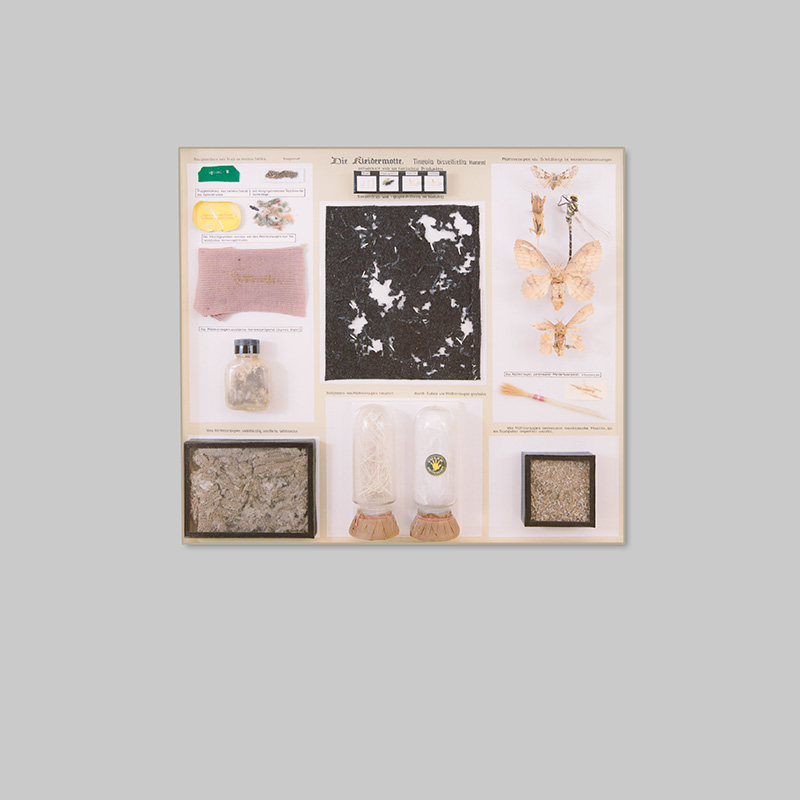 The Clothes Moth
The Clothes Moth
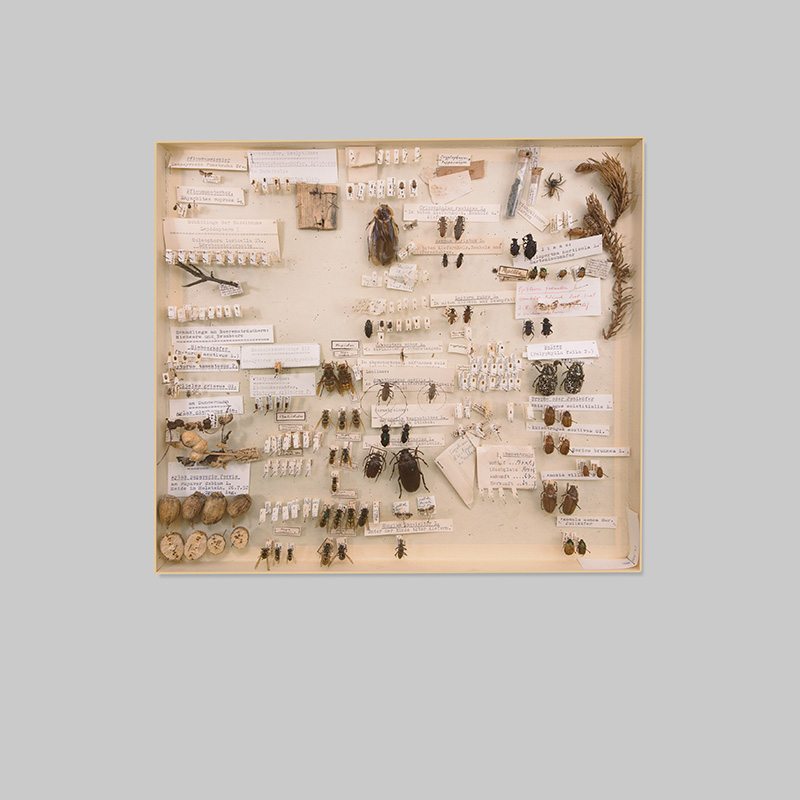 Animals That Threaten Us, Unsorted Tray 18
Animals That Threaten Us, Unsorted Tray 18
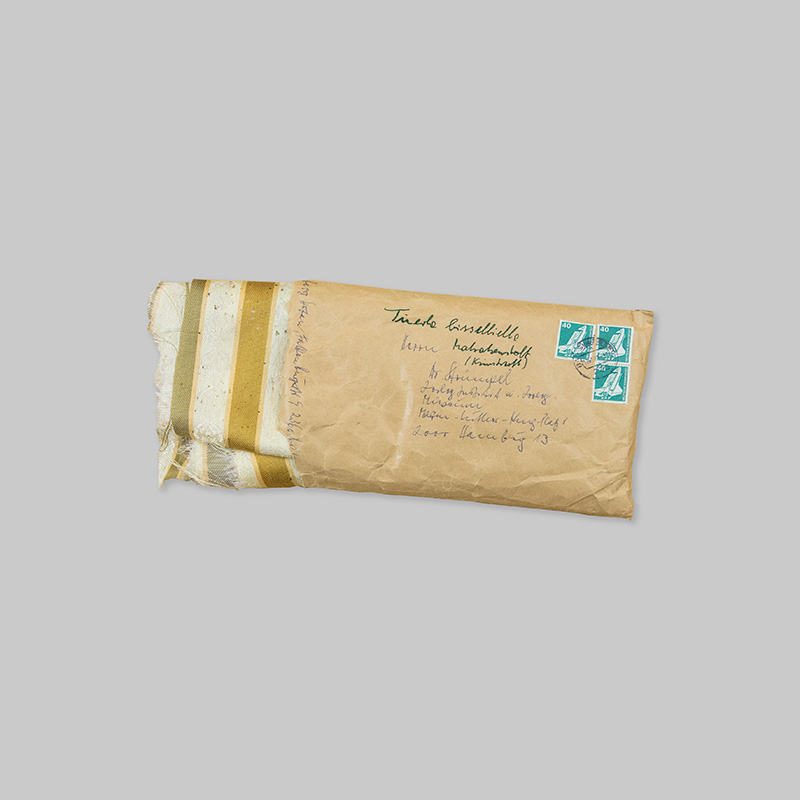 National Wealth and Public Health
National Wealth and Public Health
A package addressed to Professor Herbert Weidner in 1955, with a piece of cloth infested with an unknown pest.
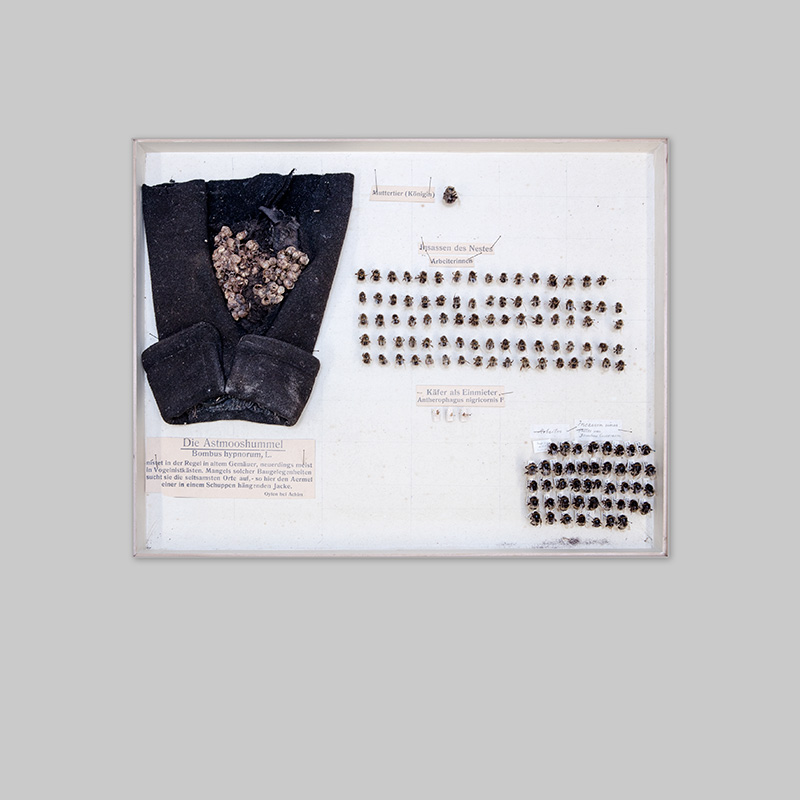 The Bumble Bee
The Bumble Bee
Bumble bees usually nest in old buildings and sometimes in bird boxes. In the absence of such structures, the queen seeks out other creative places, such as the sleeves of a jacket hanging in a shed.
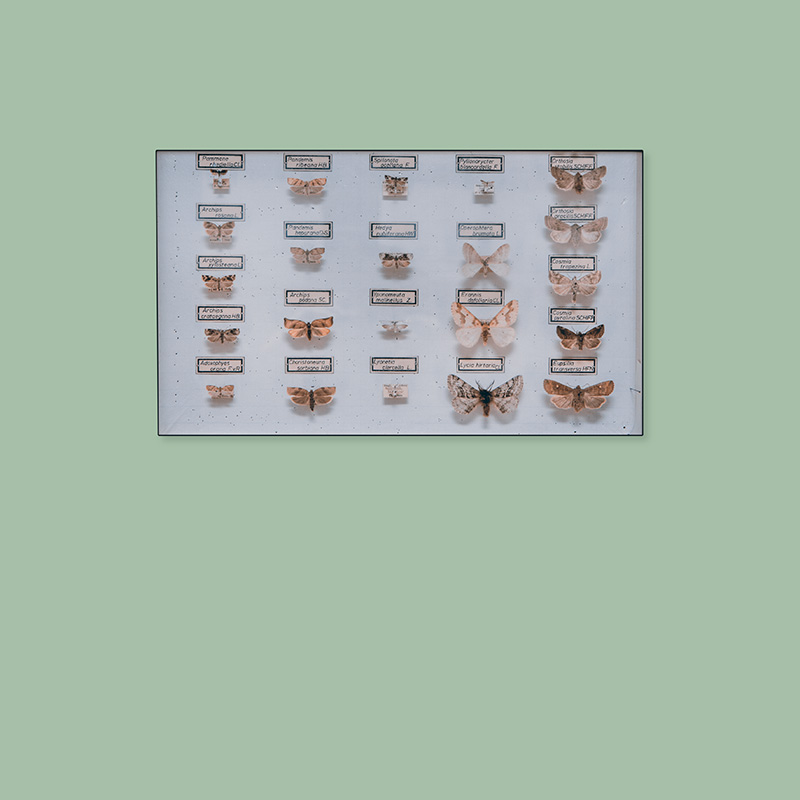 Harmful Butterflies on Apple Trees
Harmful Butterflies on Apple Trees
 Stock Pests (sawtoothed grain beetle, wheat weevil, maize weevil, rice weevil, bark beetle, merchant grain beetle, drugstore beetle, flour moth, bean weevil, coffee borer beetle, Indian meal moth, tropical warehouse moth, mealworm beetle, cigarette beetle, clothes moth, silverfish, lesser wax moth, greater wax moth, house cricket, German cockroach, Angoumois grain moth)
Stock Pests (sawtoothed grain beetle, wheat weevil, maize weevil, rice weevil, bark beetle, merchant grain beetle, drugstore beetle, flour moth, bean weevil, coffee borer beetle, Indian meal moth, tropical warehouse moth, mealworm beetle, cigarette beetle, clothes moth, silverfish, lesser wax moth, greater wax moth, house cricket, German cockroach, Angoumois grain moth)
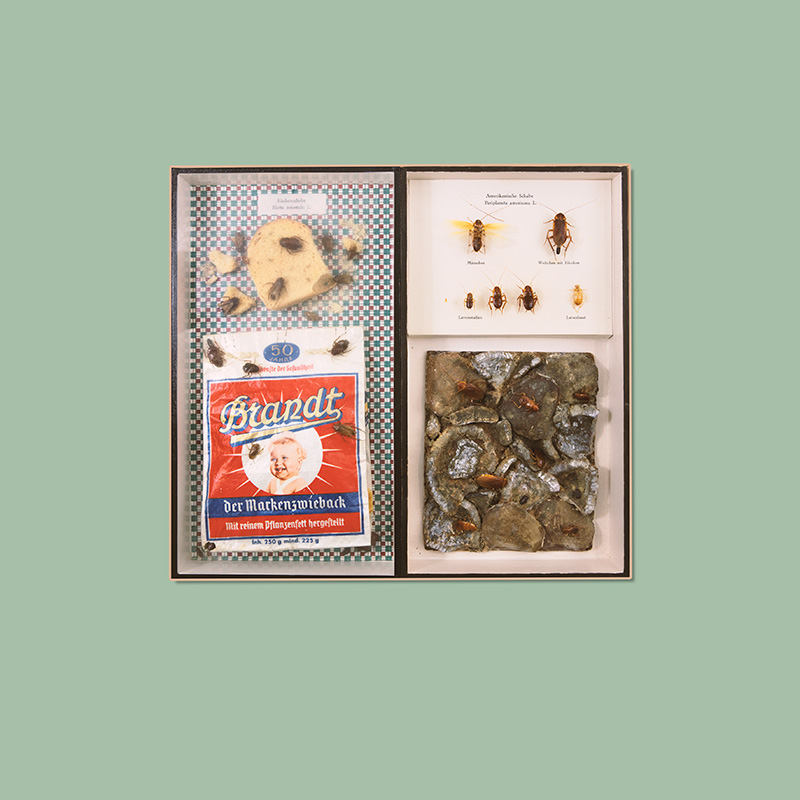 Oriental Cockroach, American Cockroach
Oriental Cockroach, American Cockroach
 The Cacao Moth
The Cacao Moth
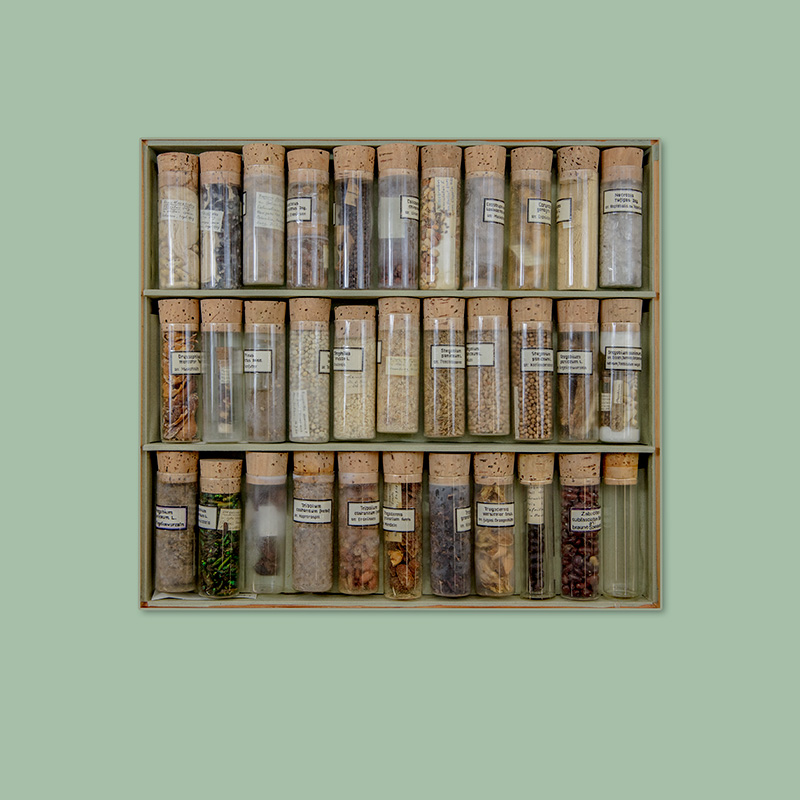 Cosmopolitan Species (bean weevil, pea weevil, red-legged ham beetle, merchant grain beetle, Australian spider beetle, rice weevil, drugstore beetle, red flour beetle, cabinet beetle, Mexican bean weevil)
Cosmopolitan Species (bean weevil, pea weevil, red-legged ham beetle, merchant grain beetle, Australian spider beetle, rice weevil, drugstore beetle, red flour beetle, cabinet beetle, Mexican bean weevil)
The More We Get Together (II), 2018 was first created for the exhibition cycle Disappearing Legacies: The World as Forest (Germany, 2017/18). It was developed as part of a research residency funded by the Goethe-Institut Singapore enabling visits to the collections of the Centre for Natural History (CeNak) of the University of Hamburg. With thanks to entomologist Dr Martin Husemann, CeNak. For more information, click here.
Copyright 2019, Institute of Critical Zoologists